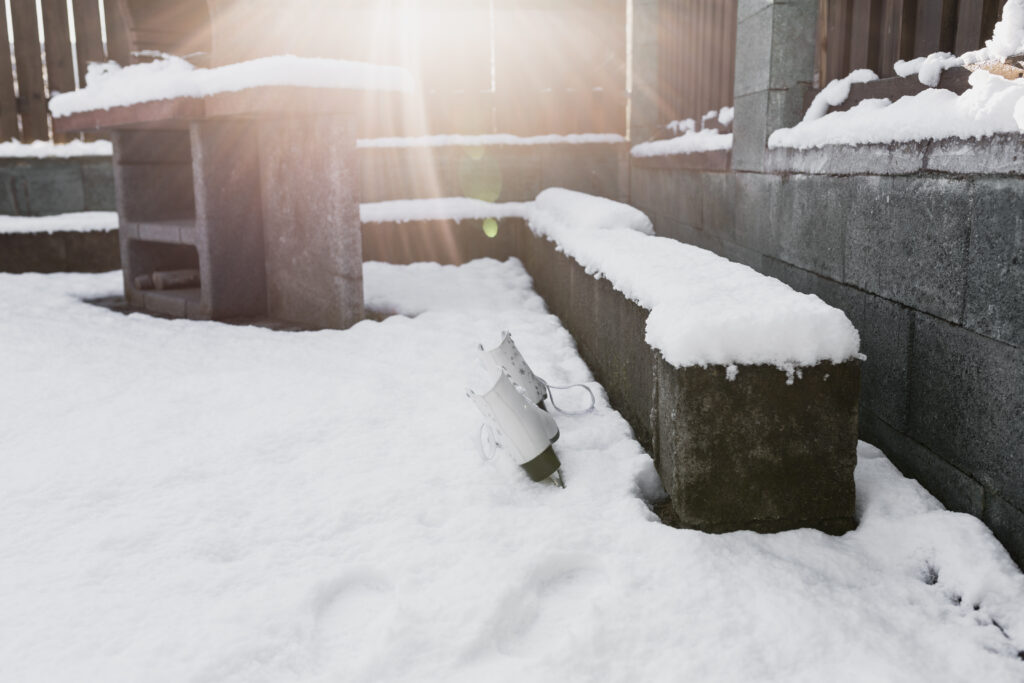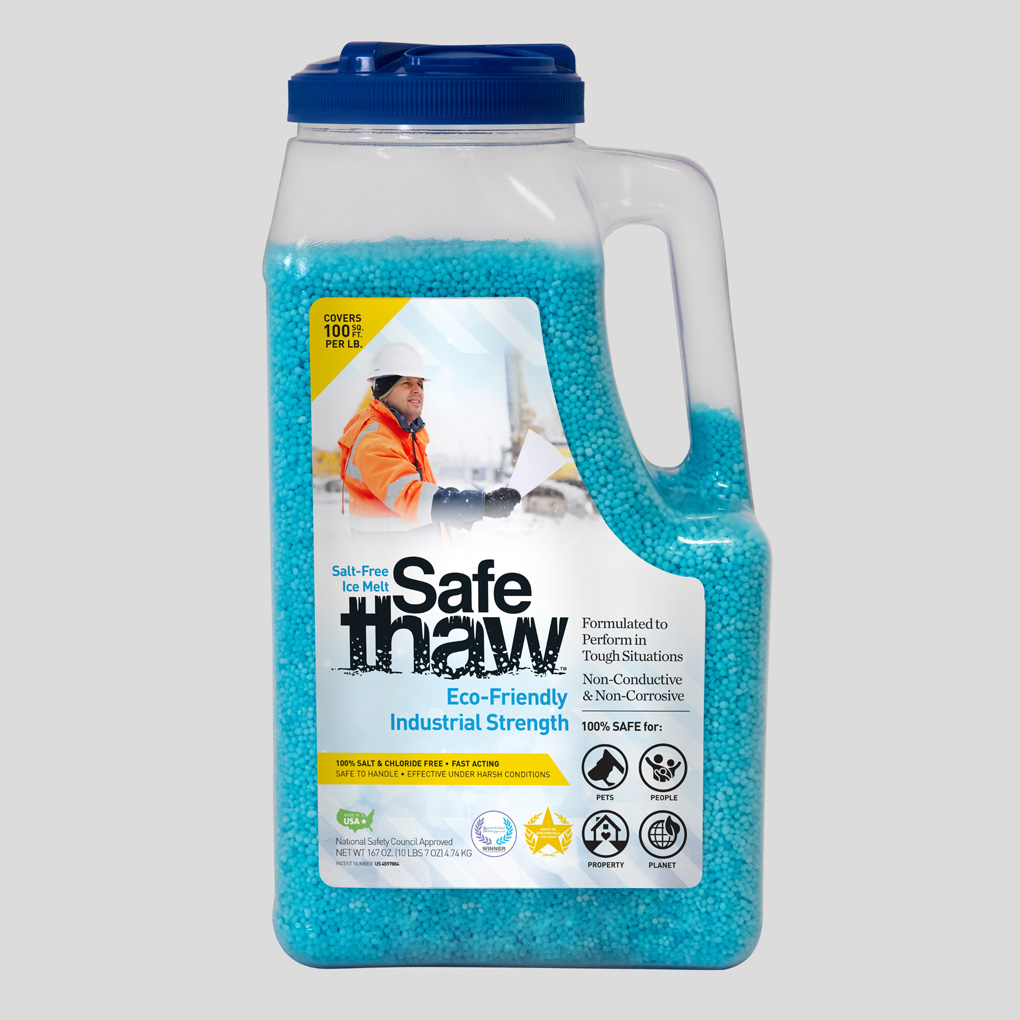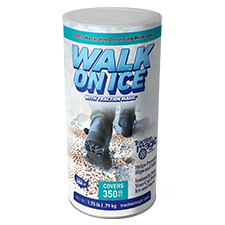How-To Guide: Removing Paint From Concrete Without Damage

Paint spills and splatters on concrete surfaces can be a real eyesore. Whether it’s accidental drips or old, flaking paint, removing it without damaging the concrete can seem daunting. So, how to remove paint from concrete without causing any damage?
To remove paint from concrete, you’ll need to assess the paint condition, prepare the surface, use mechanical or chemical methods, consider natural remedies, and ensure a final cleaning and protection step.
In this how-to guide, we’ll show you the best methods for removing paint from concrete without causing any damage. We also talk about some effective tips for maintaining your concrete driveways.
Let’s dive into removing paint from concrete without any hassle.
Things to Consider Before Removing Paint From Concrete
Before removing paint from concrete, consider a few important factors. Below, we point out the key things you need to consider before embarking on your paint removal journey.
- Paint Type: Different types of paint require different removal methods. Determine whether the paint on your concrete surface is oil-based, latex-based, or epoxy, as this will affect the choice of removal technique and products.
- Surface Condition: Inspect the condition of the concrete surface. Are there any cracks, chips, or previous damage? These factors can impact the paint removal process and may require additional repairs before proceeding.
- Safety Precautions: Paint removal often involves using chemicals or mechanical tools. Ensure you take necessary safety precautions, such as wearing protective eyewear, gloves, and a respirator, to protect yourself from any potential hazards during the process.
- Environmental Considerations: Consider the environmental impact of your paint removal method. Some chemical strippers or paint removers may contain harmful substances. Look for eco-friendly alternatives or choose methods that have minimal environmental impact.
- Time and Effort: Removing paint from concrete can be a time-consuming and labor-intensive, depending on the area’s size and the paint’s condition. Evaluate your available time and resources to determine the most suitable approach.

Safe Thaw
Safe Thaw was created as the ice management solution for tough winter environments. Ideal in commercial and industrial properties, shops, government agencies, bridges, and construction.
How to Remove Paint from Concrete Without Damage?
Removing paint from concrete surfaces can be challenging. But with the right approach and techniques, you can achieve excellent results without causing any damage. Here, we will take you through the step-by-step process of effectively removing paint from concrete.
Step 1: Equipment Required
To remove paint from concrete without damage, you will need the following equipment:
- Safety goggles, gloves, and a dust mask to protect yourself
- Scrub brush or broom with stiff bristles to loosen the paint
- Plastic drop cloths or tarps to protect the surrounding area
- Paint scraper or putty knife for initial paint removal
- Pressure washer or garden hose with a high-pressure nozzle
- Chemical paint stripper for tougher paint removal
- Power sander or grinder for mechanical paint removal
Step 2: Assessing the Paint Condition
Before you begin removing paint from the concrete surface, assess the condition of the paint. Determine if it is peeling, chipped, or firmly adhered. This evaluation will help you choose the appropriate method and avoid unnecessary damage to the concrete.
Step 3: Preparing the Concrete Surface
Prepare the concrete surface by removing any loose debris or dirt. Sweep the area thoroughly and use a power washer or garden hose to clean the surface. Allow it to dry completely before proceeding with the paint removal process.
Step 4: Mechanical Paint Removal
For larger areas or stubborn paint, mechanical methods can be highly effective. Using a power sander or grinder with the appropriate abrasive attachment, gently remove the paint layer by layer. Do not apply excessive pressure, as it may damage the concrete.
Step 5: Chemical Paint Removal
Chemical paint strippers are an excellent option for removing paint from concrete. Apply the stripper according to the manufacturer’s instructions, ensuring you wear protective gear. Allow the stripper to sit for the recommended time, and then use a scraper or brush to remove the softened paint.
Step 6: Natural Remedies
If you prefer eco-friendly options, natural remedies can help remove paint from concrete. Vinegar, baking soda, and detergent can be applied to the painted surface. Allow it to sit for some time, then scrub the paint away using a brush or scraper.
Step 7: Final Cleaning and Protection
Once the paint is successfully removed, thoroughly clean the concrete surface to remove any remaining residue. Rinse the area with clean water and allow it to dry completely. Consider applying a protective coating or sealer to preserve the concrete and prevent future paint damage.
What Should You Do To Prevent Damage to Your Concrete Areas?
Maintaining the integrity of your concrete areas is essential for their longevity and aesthetics. Here, we will explore additional measures you can take to safeguard your concrete areas and keep them looking their best.
Regular Cleaning and Sweeping
Regular cleaning and sweeping are crucial for preventing damage to your concrete areas. Dirt, debris, and leaves can accumulate on the surface, leading to stains and potential deterioration. Removing these contaminants regularly reduces the risk of them causing long-term harm to the concrete.
Use Proper Snow and Ice Removal
During the winter, you should use proper snow and ice removal to prevent damage to your concrete areas. Avoid using harsh de-icing chemicals or salt that can penetrate and deteriorate the concrete. Instead, opt for safe alternatives like Safe Thaw, specifically formulated for concrete use. This non-corrosive and non-conductive ice melt solution lets you keep your concrete driveways clean and safe.
Promptly Address Spills and Stains
Accidental spills of oil, grease, or other substances can occur on concrete surfaces. Address these spills promptly to prevent them from penetrating the concrete and causing discoloration or deterioration. Clean up any spills immediately using appropriate cleaning agents or techniques recommended for concrete surfaces.
Avoid Using Harsh Chemicals
When cleaning your concrete areas, avoid using harsh chemicals that can damage the surface. Acidic or abrasive cleaners can erode the protective layer of the concrete, leaving it vulnerable to further damage. Opt for mild, pH-neutral cleaners specifically designed for use on concrete to maintain its integrity.
Apply a Protective Sealer
Applying a protective sealer to your concrete areas is an effective way to prevent damage. A high-quality sealer creates a barrier that shields the concrete from moisture, stains, and UV rays. Regularly inspect the sealer and reapply it as needed to ensure continuous protection.
Can Heat Or Steam Be Used To Remove Paint From Concrete Surfaces?
While heat or steam may seem like viable options for removing paint from concrete surfaces, they are not recommended. Concrete can be sensitive to extreme temperatures, and applying heat or steam may cause the surface to crack or damage.
Additionally, the paint may actually bond more tightly to the concrete when exposed to heat, making removal even more challenging. Avoid using heat or steam as a paint removal method and instead opt for safer alternatives, as discussed above. This method is specifically designed to effectively remove paint without causing harm to the concrete surface.
100% salt & chloride-free, fast acting Ice Management Solution
Final Notes
This step-by-step guide has provided you with effective techniques on how to remove paint from concrete without causing any damage. Following these methods, you can restore your concrete surfaces to their original state.
Remember to prioritize safety precautions and test the chosen method in a small area before proceeding with the entire surface. With the right approach and patience, you can achieve a paint-free and pristine concrete surface, enhancing the overall appearance of your space.
Try Also Our Other Winter Safety Products:
Safe Paw
The Original and #1 Selling Pet and Child Safe Ice Melt for over 20 years. Guaranteed environmentally safe –It won’t harm animals or children, and it won’t damage your property. That’s Safe Paw. Safe Paw can change how winter affects our planet.

Walk On Ice
The handy disposable canister can be taken everywhere, with the same 100% naturally occurring minerals that provide instant traction on ice or snow. Use it on sidewalks, steps, or as an instant traction agent for your car.



